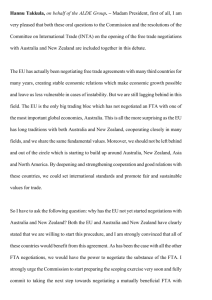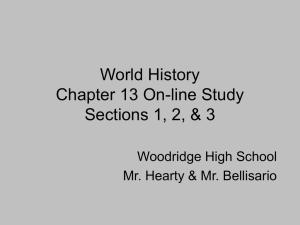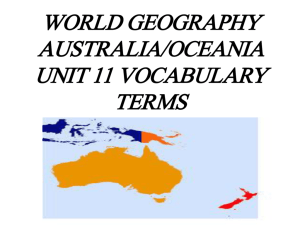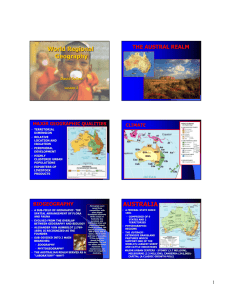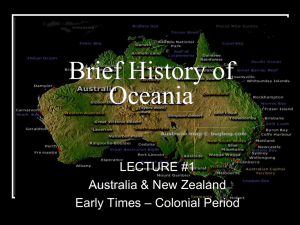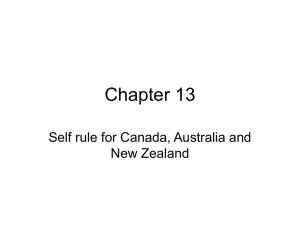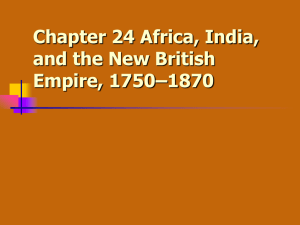Growth of Australia and New Zealand
advertisement
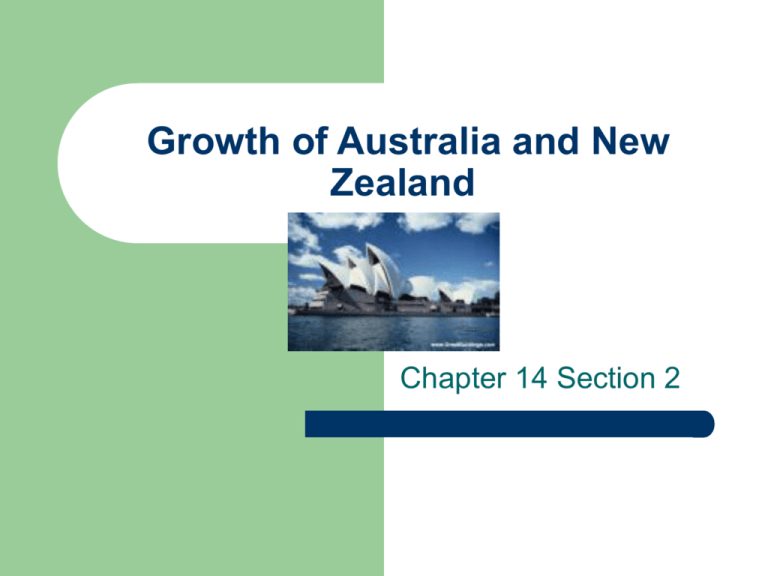
Growth of Australia and New Zealand Chapter 14 Section 2 The First Migrations Two major migrations of people in Australia The first occurred 40,000 years ago The second over 200 years ago The Aborigines were nomadic hunters and gatherers They lived in small groups and spoke almost 250 languages Aborigines recorded history through oral tradition and held a deep religious bond with nature. Migration of New Zealand The Maoris are seafaring people from southeast Asia who arrived about 800 years ago They used 100 ft. long canoes to navigate the ocean The Maoris were farmers and lived in villages unlike the Aborigines A Marae was their ceremonial gathering place and was usually decorated with woodcarvings. The First European Settlers 1769 – Captain James Cook landed in New Zealand, the following year he claimed Australia for Great Britain. Britain used Australia as a penal colony, a place where they could send people who committed crimes. 1787 – the first convicts arrived which was called the First Fleet Condemned to Transportation The First Fleet consisted of 776 men, women, and children More than 160,000 would following ranging from crimes such as murder to petty theft Most prisoners died in the hold of the ships during the 8 month voyage. The convicts were forced into laborious chain gangs Upon completion of their sentence most became settlers on the eastern coastal rim. Impact of European Settlement Most settlers herded merino sheep and sold their wool. 1851 – Australian gold rush led to thousands of new settlers People began to settle the west coast along the city of Perth. The settlers brought the English language over along with ideas of government and customs Impact on the Aborigines and Maoris The Aborigines easily lost to the English because they used stone age weapons. Most died from smallpox and measles Today only 200,000 Aborigines exist which is about 1% of the Australian population. Wars in New Zealand between settlers and Maoris also led to a dramatic reduction in their population Political Development Australia and New Zealand had gained independence by the early 1900s Both countries are part of the British Commonwealth of Nations Australia and New Zealand borrowed government ideas from the US and England They have a Prime Minister and Parliament but refer to their bicameral houses as the Senate and House of Representatives Australia and New Zealand invented the secret ballot and were the first nations to grant women suffrage Economic Development Australia is a leader in the production of wool, coal, and iron ore Both nations have a high standard of living Australia faces the problem of overgrazing Water is scarce and causes frequent shortages Mining has caused pollution, loss of resources, and the destruction of Aborigines homes Regional and Global Issues Australia and New Zealand fought along the British in WWI and WWII During the cold war they sided with the United States. Australia has fought against the communists in Korea and in Vietnam Today, their biggest trading partner is Japan Despite discrimination many Southeastern Asian immigrants (Singapore, Thailand, Hong Kong, Philippines, Indonesia) are settling Australia New Zealand has adopted a nuclear free zone which has caused friction with the US; no US warship with nuclear weapons may dock at a New Zealand port
